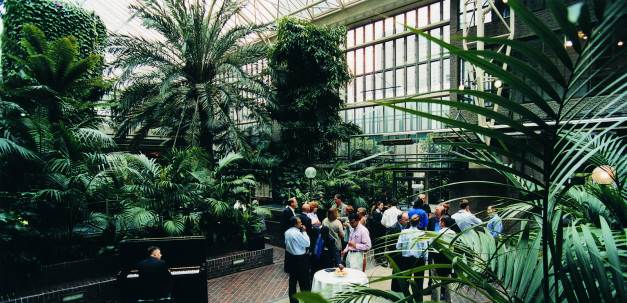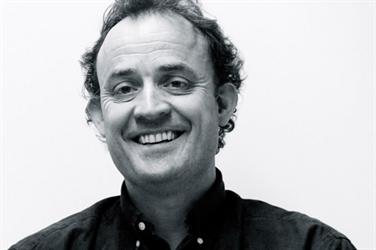 The ‘conservatory’ on the fourth floor of the Barbican is an unusual place for the Landscape Institute to hold a party, but last night it was rammed with Landscape Architects from all ends of the profession. Was it was an inspired choice? The brutalist architecture countered by the Tetrastigma, Ficus benjamina and other seventies throwbacks gave a neat if somewhat outdated reminder of the relevance of landscape and an interesting contrast to one of the themes of the evening – the 300th anniversary of Capability Brown. Some might argue that the 1970’s was not landscape architecture at its finest.
The ‘conservatory’ on the fourth floor of the Barbican is an unusual place for the Landscape Institute to hold a party, but last night it was rammed with Landscape Architects from all ends of the profession. Was it was an inspired choice? The brutalist architecture countered by the Tetrastigma, Ficus benjamina and other seventies throwbacks gave a neat if somewhat outdated reminder of the relevance of landscape and an interesting contrast to one of the themes of the evening – the 300th anniversary of Capability Brown. Some might argue that the 1970’s was not landscape architecture at its finest.
 What interested me though was a second theme that emerged from the evening. In his ‘acceptance’ speech Noel Farrer (the incoming president) spoke of the great work done by Sue Illman (the outgoing president). As most people know, Sue’s area of expertise is water – SUDS, water sensitive urban design and the like. Noel mused on the way that Sue’s use of a single theme – water – was able to illustrate potential weakness in almost any issue, whether it is urban design, agriculture, global warming or transport.
What interested me though was a second theme that emerged from the evening. In his ‘acceptance’ speech Noel Farrer (the incoming president) spoke of the great work done by Sue Illman (the outgoing president). As most people know, Sue’s area of expertise is water – SUDS, water sensitive urban design and the like. Noel mused on the way that Sue’s use of a single theme – water – was able to illustrate potential weakness in almost any issue, whether it is urban design, agriculture, global warming or transport.
Water of course connects all issues, especially those around biological (including human) activity. It is the connectivity and life force carrier of all biological systems.
Afterwards I was speaking to Jason Prior, a friend from college days. Jason trained as a landscape architect, but these days runs the built and external services section of Aecom, an international services company. He has around 10,000 people working for him – structural and services engineers, architects planners and of course some landscape architects. I asked him what he thought his training as a landscape architect brought to the job that others would not have. His answer was – “An understanding of systems”. An interesting answer. I thought about this: structural engineers are principally problem-solvers; services engineers design systems, architects (whilst doing a bit of both of those) design objects. Landscape architects on the other hand design frameworks which are then populated by systems and biological components. Although we also have our share of object design and problem-solving, it is this ability (or necessity?) to see the wider picture that makes landscape architects unique amongst design professionals. Not only do we design with time in a way which no other professions do, our projects are actually designed to change and develop as time passes. My guess is that the bigger the scheme, the truer this is.
So the question remains, are these skills under-utilised? Does landscape architecture provide a training – or state of mind – for more widely applicable skill-set? If so, how can the profession market itself to be taken more seriously, more widely. Perhaps we should leave it to Noel Farrer to answer that one.

